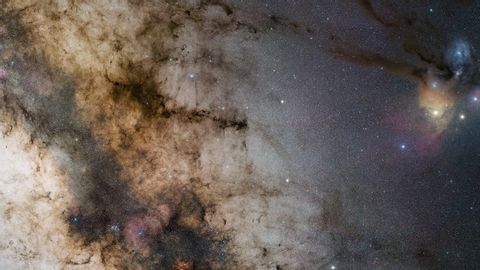
Subtitles & vocabulary
In Search of Pure Dark Skies
00
Why Why posted on 2013/04/08Save
Video vocabulary
night
US /naɪt/
・
UK /naɪt/
- Noun
- Time when sun does not shine
- Adjective
- Working during the very early morning
A1
More light
US /laɪt/
・
UK /laɪt/
- Transitive Verb
- To cause something to burn; put a burning match to
- To provide a way to see ahead
- Adjective
- Being bright making it easy to see; not dark
- Being pale and lacking darkness of color
A1
More dark
US /dɑrk/
・
UK /dɑ:k/
- Adjective
- Of a color that is not light
- Marked by unhappiness or hopelessness
- Uncountable Noun
- The time of day when the sky is black
A1
More water
US /ˈwɔtɚ, ˈwɑtɚ/
・
UK /'wɔ:tə(r)/
- Uncountable Noun
- Clear liquid that forms the seas, rivers and rain
- Large area such as an ocean or sea
- Intransitive Verb
- (Of the eyes) to produce tears
- (Mouth) to become wet at the thought of nice food
A1
More Use Energy
Unlock All Vocabulary
Unlock pronunciation, explanations, and filters
